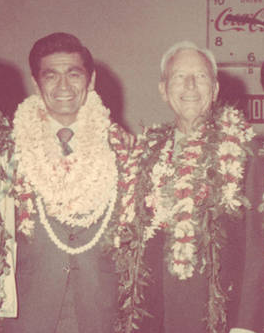This Week’s Hawaii Volcano Observatory Report, for February 25, 2013:
Lava lake in Halemaʻumaʻu Overlook pit
The lava lake in Halemaʻumaʻu remains poised at a relatively high level within the Overlook pit. The lake level dropped over the weekend. Though rising again now, it has not yet reached last week’s level.
Recently emplaced flows on Puʻu ʻŌʻō’s spillway
Top: The “spillway”—Puʻu ʻŌʻō’s eastern flank—has been buried by flows fed mostly from a spatter cone on the northeastern side of the crater floor. Most of the dark-colored lava in the foreground is new lava that has resurfaced the spillway. The fume to the left is the trace of the Peace Day tube, newly covered by crater overflows, currently carrying lava to the coast. The tube carrying lava to the northeast is not obvious, but extends toward the lower right side of the photo. Bottom: Some of the recent overflows at Puʻu ʻŌʻō traveled to the southeast. This photo shows those overflows, which comprise several dark-colored channelized flows.
Spatter cone on northwest side of Puʻu ʻŌʻō’s crater floor
Top: There are currently four spatter cones on the floor of the Puʻu ʻŌʻō crater that have been the source of lava flows over the past several months. The one shown here is on the northwest side of the crater floor, close to the multiframe webcam shown on our website. The webcam, and an HVO geologist standing next to it, give a sense of scale for the spatter cone. The camera to the right of the person is the thermal camera on Puʻu ʻŌʻō shown on our website. Bottom: This is a closer look at the spatter cone on the northwest side of Puʻu ʻŌʻō’s crater floor. The photo was taken from near the site of the webcam on the north rim of Puʻu ʻŌʻō.
Spatter cone on northeast side of Puʻu ʻŌʻō’s crater floor
Top: This is another of the spatter cones on the floor of Puʻu ʻŌʻō. This one, on the northeast side of the crater floor, has long had an open top with a view of a small lava lake. Most of the overflows from Puʻu ʻŌʻō in the last few weeks have been fed from this spatter cone, successively piling up until the top of the spatter cone is now about level with the webcam on the north rim of Puʻu ʻŌʻō. Bottom: This is a steep aerial view of the small lava pond at the top of the spatter cone on the northeastern side of the crater floor. Lava in the pond flows directly into a lava tube which is supplying the active flow northeast of Puʻu ʻŌʻō. The head of the tube, marked by fume, extends from the pond toward the left side of the photo.
Views of the Kahaualeʻa flow, northeast of Puʻu ʻŌʻō
Top: The flow traveling north from Puʻu ʻŌʻō, which we are informally calling the Kahaualeʻa flow, abuts the edge of episode 58 flows erupted during 2007–2008. The flow has also partially surrounded one of the few vestiges of greenery within the flow field—the forested top of the old Kahaualeʻa cone. Bottom: This is a view of the front of the Kahaualeʻa flow looking back toward Puʻu ʻŌʻō, where the flow originates.
Ocean entry near Kupapaʻu Point
Lava continues to enter the ocean near Kupapaʻu Point, with an entry point just inside the National Park (near left side of photo) and entry points just east of the Park boundary (near the center of the photo). Widely scattered patches of surface lava are also active inland from the ocean entry points. Puʻu ʻŌʻō is a low lump on the horizon near the top of the photo immediately to the right of the image’s center line. The plume from the lava lake in Halemaʻumaʻu is visible in the background to the left of the image’s center line.
Related articles
- Satellite Image Shows Active Lava Breakouts on Flow Field (damontucker.com)
- Spatter Cone and Lava Pond (pacificislandparks.com)
- Lava lake on Hawaii’s Mount Kilauea hits a record high (science.nbcnews.com)
- Multiple Lava Streams Enter the Ocean Near Base of Kilauea (damontucker.com)
- Hawaiian lava lake hits new record high (theextinctionprotocol.wordpress.com)
Filed under: Announcements, Big Island, Environment, Hawaii, Hawaiian, Unexplained Phenomenon | Tagged: Halemaʻumaʻu, Hawaii Volcano Observatory, Lava Lake, Puʻu ʻŌʻō | Leave a comment »








































